Electric brushing
Electric brushing
Brushing your teeth is the basis for good oral hygiene
Good oral hygiene keeps your teeth, molars and gums healthy. Brushing your teeth forms the basis for this. But brushing your teeth properly is a meticulous job and certainly not easy. Especially with a normal toothbrush it often does not work well enough. Plaque easily remains on and between the teeth. This can cause cavities and gum disease. With an electric toothbrush you can easily remove dental plaque.
The electric toothbrush makes the right brushing movement for you. This allows you to better concentrate on the placement of the brush head in the mouth. Brushing with an electric toothbrush does not mean that dental care continues 'automatically'. Even now it is important that you handle the brush properly and work carefully. Brushing with an electric toothbrush makes it clean between your teeth and molars are not superfluous!
What types of electric toothbrushes are there?
There are mainly two types of electric toothbrushes. The technique of the brushes differs. For example, the oscillating-rotating (spinning back and forth) and the sonic (sideways back and forth) technique are used. Research shows that these brushes remove plaque better than normal manual toothbrushes. They therefore ensure better oral hygiene.
The rotating brushes have a small round brush head. This makes it easier to remove dental plaque in hard-to-reach places. They are the most popular and the most effective. A pulsating technique has been added to the latest rotating brushes. The brush head moves at a high speed towards the tooth. This way the bristles get between the teeth better.
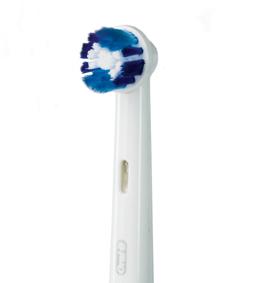
rotating brush
The sonic brushes have the familiar shape of the regular manual toothbrush. The brushing technique is very similar to that of the regular toothbrush. The brush moves back and forth quickly and makes a sideways brushing motion.
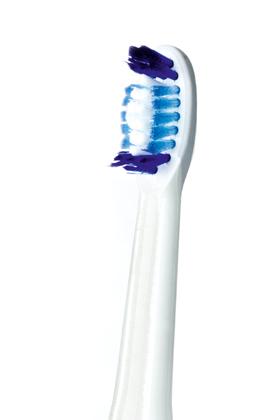
sonic brush
Which electric brush should I choose?
There are many different types of electric toothbrushes for sale. That often doesn't make choosing any easier. First choose a brush head. Do you want to brush with a small round brush head? Or do you prefer the familiar elongated shape? In fact, you now make the choice for the rotary or sonic system. In any case, choose a battery-charged electric toothbrush. They function better than the battery-operated variants. The battery-powered ones are less effective. They make a limited number of brushing movements and the battery power is low. Battery-powered brushes are a handy alternative for a holiday. Almost all battery-powered electric toothbrushes have a timer. This is useful, because then you will receive a signal after two minutes of brushing that you have brushed long enough. Some brushes give a signal after thirty seconds so that you know that you can change faces. Choose a brush that you feel comfortable using. You will brush better with it and you have a smaller chance of causing damage to your teeth or gums. The best toothbrush is the one you love to use!
Also look at: www.oralb.nl and www.philips.nl
What should I brush with?
Use a brush with soft bristles. Replace as soon as the bristles become parted and protrude beyond the brush head. A new brush head removes more plaque than a brush that needs to be replaced. Brush your teeth twice a day with fluoride toothpaste. Whether you brush electrically or normally: on the advice of your dentist or dental hygienist, also clean the spaces between your teeth with brushes, dental floss or toothpicks. Choose the aids in consultation with your dentist or dental hygienist.
How should I brush with an electric toothbrush?
Below you will find clear cleaning instructions for the rotating system. The cleaning technique for the sonic variant differs from this. Please refer to the user manual of your electric toothbrush.
Place the brush at a slight angle on the tooth surface just over the gum line. Apply little pressure. As soon as the brush makes contact with the tooth surface, the brush already cleans. Hold the brush still on the tooth for a few seconds, so that the brush also reaches between your teeth. The brush itself makes the brushing movement. Only move the brush to move it to the next tooth. Follow the shape of your teeth and molars. Are you going to brush electrically for the first time? Ask your dentist or dental hygienist for brushing instructions.
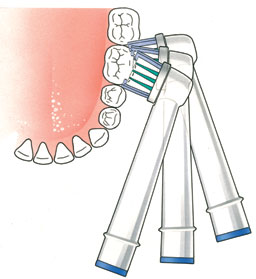
Follow the shape of your teeth
Instruction electric brushing
Keep to a regular brushing order. Always start on the inside in the lower jaw and brush it all over. Carefully brush the back of the last molar first. Move the brush one tooth at a time. Make sure you place the brush head deep between your teeth and your tongue. Otherwise, the bristles will not hit your molars properly and the edge of the gums will not be clean. Then brush the entire outside of the lower jaw. Do that again tooth by tooth. Then brush the top of the molars (the chewing surfaces). Brush here again, choose by choice. Then brush the inside of the upper jaw in the same way, followed by the outside and finally the top again.

Keep to a regular brushing order
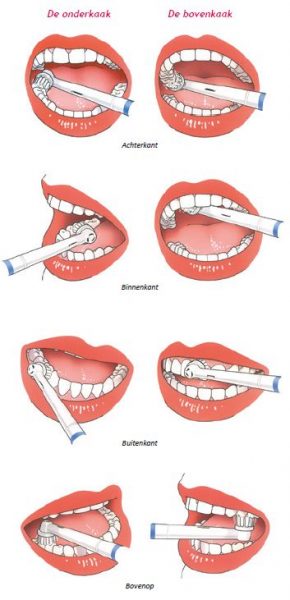
Electric cleaning instructions
Is an electric toothbrush better than a regular toothbrush?
Yes, research has shown that electric toothbrushes remove plaque better than regular manual toothbrushes. They therefore ensure better oral hygiene.
Does the electric toothbrush also clean between my teeth?
If you use the electric brush correctly, it will partially reach between your teeth. Electric brushing does not make cleaning those interspaces superfluous! Therefore, on the advice of your practitioner, also clean the spaces between your teeth once a day with brushes, dental floss or toothpicks.
Which toothpaste should I use when using an electric toothbrush?
Also brush your teeth with an electric toothbrush twice a day with a fluoride toothpaste.

Can an electric toothbrush damage gums or tooth enamel?
When used properly, the electric toothbrush cannot damage your gums or tooth enamel. If you use the wrong brushing method, brush too vigorously or use a highly abrasive toothpaste, you can damage your gums and tooth enamel. But this also applies to using a regular toothbrush. This is even possible if you use a brush with soft bristles. Therefore, take your brush with you to the dental practice and ask your dentist or dental hygienist for brushing instructions.
Can I only brush electrically?
Yes, you can only brush your teeth electrically. Would you also like to continue brushing manually? For example, brush once electrically and once with a regular toothbrush per day.
Is an electric toothbrush also suitable for children?
Yes, as soon as children can hold a toothbrush, they can also use an electric toothbrush. There are special electric toothbrushes and brush heads for children. They are smaller and therefore suitable for the children's mouth. Brushing with an electric toothbrush is fun for children. It can contribute to the motivation to take good care of the teeth. The electric toothbrush is a handy tool, especially for parents. With the electric toothbrush, parents can brush easily and thoroughly. Guide your child to brush their teeth until they are ten years old. This applies to both electric and regular toothbrushes.
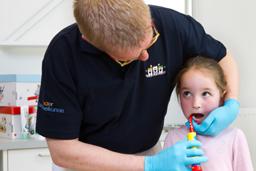
Who is electric brushing suitable for?
Electric brushing is suitable for everyone. Many people have trouble brushing their teeth properly and often skip cleaning between the teeth. Then an electric brush can be effective. The electric brush can be a very practical tool for people with, for example, rheumatism, gag tendencies or disorders in fine motor skills. Do you need to brush the teeth of, for example, your child, resident or patient? The electric brush can also offer a solution in that case.
Does electric brushing also have disadvantages?
The vibration of the brush is sometimes experienced as unpleasant, but you often get used to it after a while. The electric toothbrush is also more expensive than a regular brush. This applies to both the purchase of the toothbrush and the replacement of the brush heads. Inside the handle of an electric toothbrush is a complicated piece of technology. If the brush falls on the floor, it may break.
The benefits of electric brushing
- The electric toothbrush makes the right brushing movement for you. This allows you to fully concentrate on properly positioning the brush head.
- If you use the electric brush correctly, you will remove more plaque on and between your teeth and along the gumline than with a regular toothbrush.
- Electric brushing is easy and less tiring. As a result, you are likely to take more time to brush. Timers help with that. They give a signal after two minutes.
- With an electric toothbrush you usually brush longer, which also makes your teeth cleaner.